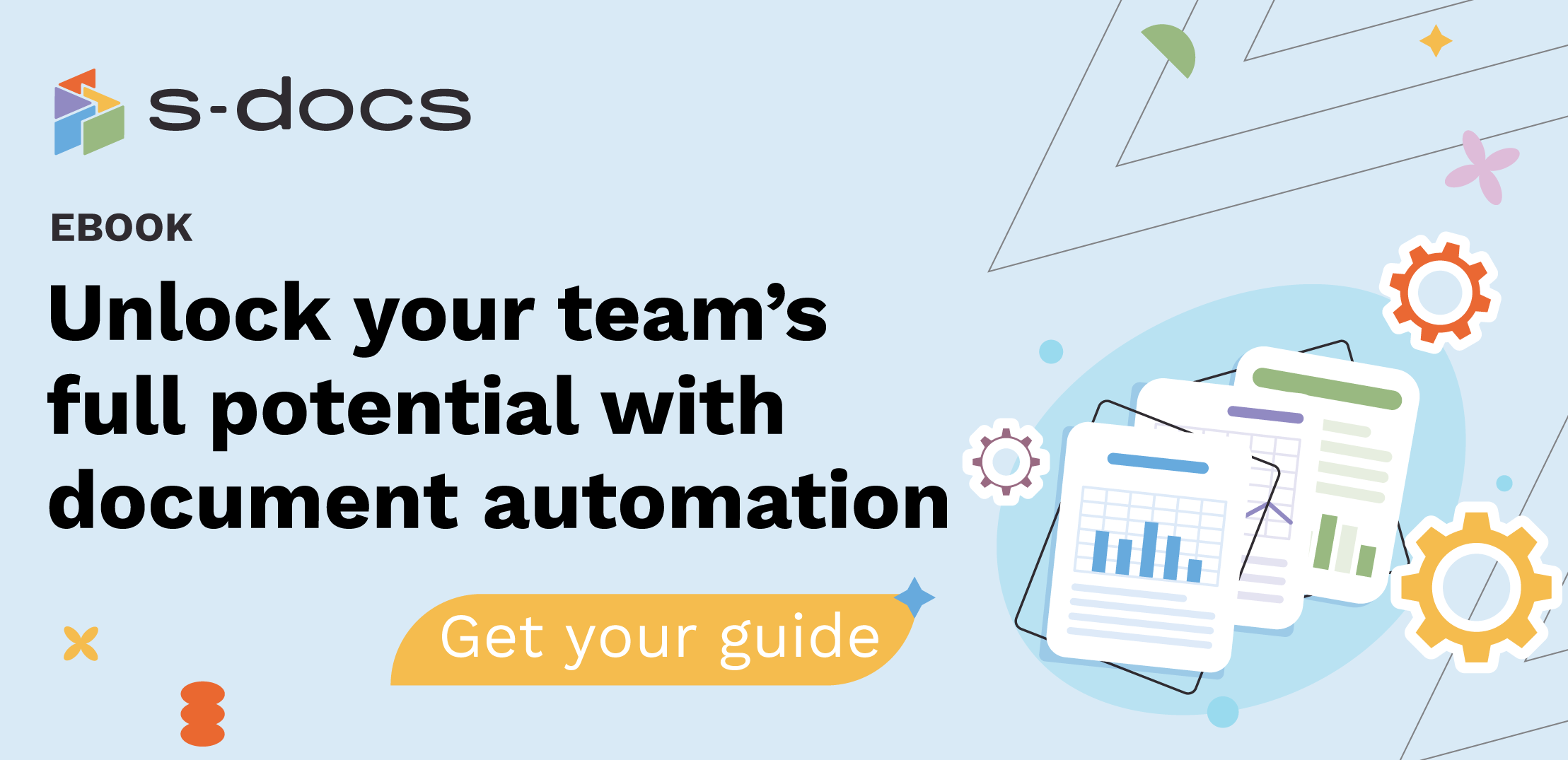The Need for Efficiency in Today’s Businesses
Business efficiency is crucial. Imagine running a marathon while juggling — sounds chaotic, right? That’s what managing documents without automation can feel like. Paper-driven processes can slow you down, sap your productivity, and ultimately hurt your bottom line. A document automation tool can streamline operations and free up valuable time for more strategic tasks.
Evaluating Your Organization’s Readiness for a Document Automation Tool
Before you dive into an unknown pool, it’s wise to check the water temperature — trust me, you don’t want to learn that the hard way. Similarly, it's important to assess if your organization is ready for document automation. Here are a few key areas to consider:
Data Centralization and Integrity
Do you store your data in one central repository, like Salesforce, and is that data consistent and clean? Think of your data like ingredients in a recipe — if they’re scattered and inconsistent, your dish (or in this case, your documents) won’t turn out well. Centralized and clean data is the foundation of successful document automation. Having a single source of truth ensures that the information in your documents is accurate and up-to-date, minimizing errors and inconsistencies.
Frequency and Uniformity of Document Usage
Do you regularly send similar documents that need data from your repository? If you're constantly reinventing the wheel, it’s time to streamline. A document automation tool works best when you have standardized documents that frequently need the same types of information. For example, if you’re in sales and regularly send out proposals, quotes, or contracts that pull data from your CRM, automation can save you countless hours by automatically populating these documents with the necessary information.
Time Spent and Errors in Current Document Processes
Is creating and correcting documents taking up a lot of your time? Errors not only waste time but can also lead to costly mistakes. For instance, a typo in a legal contract or a misplaced decimal in a financial document can have serious repercussions. Take our Document Automation Quiz to find out if a document automation tool can save you valuable hours and reduce errors. This will help you identify pain points in your current processes and see how much time and effort can be saved through automation.
Laying the Groundwork for a Document Automation Tool
Once you’ve determined that your organization is ready for document creation tools, the next step is preparation. Here's how to get started:
Establishing Baseline Metrics
First, you need to know where you stand. Create a baseline metric for how long it currently takes to create and edit documents, or correct mistakes that may have slipped past your quality check. This way, you can measure the impact of a document automation tool later. Different types of documents may require different metrics. For instance, a simple one-page report might take a few minutes to prepare, while a complex multi-page contract might take hours.
Identifying High-Impact Documents
Determine which documents would make the biggest impact if automated. These are typically documents that are created frequently, include lots of data, have many conditional sections or logic, and overall take the most time. Survey your users to gather this information — it also helps with buy-in and adoption later. For example, in a legal department, automating the creation of standard contracts and agreements can significantly reduce the time spent on document preparation and review, allowing legal professionals to focus on more strategic tasks.
Surveying Users to Understand Impact and Buy-In
Involving your users from the beginning is crucial. They’re the ones who will be using the system daily, so their input is invaluable. Plus, it helps them feel invested in the change, making the transition smoother. Conducting user surveys and focus groups can provide insights into the specific needs and pain points of different departments.
Preparing for Document Automation Implementation
Once you identify that you are ready to implement document creation tools for your business. Here's how to prepare for document automation:
- Establish resources for implementation: Determine the resources you'll need for implementation, including the time and personnel required to build templates and maintain the system.
- Create a brand guide: A brand guide allows template builders to create documents that represent your organization with a consistent look and feel.
- Ensure data cleanliness and consistency: Establish precedents for making sure fields are filled in consistently and correctly so they can be merged into documents with little to no post-generation edits. But don’t worry - document automation tools like S-Docs allow you to flag when documents may be missing data so this can be corrected.
- Invest in training: Provide comprehensive training sessions to ensure everyone is comfortable with the new processes.
- Monitor progress: Track how much time is being saved and if there is a reduction in errors.
By following these steps, you can ensure a successful implementation that saves time, reduces errors, and improves efficiency. Additionally, automation streamlines the document review and approval process, ensuring that documents are managed securely and efficiently.
Enhancing your Goals with Document Automation
Automating your document management can be a game-changer, but it requires careful planning and preparation. By evaluating your readiness and taking the necessary steps to prepare, you can ensure a successful implementation that saves time, reduces errors, and improves efficiency. Additionally, automation streamlines the document review and approval process, ensuring that documents are managed securely and efficiently.
To handle the complexities of document management, you want technologies and services that not only fit but actually enhance your strategic goals. Explore the best document creation software that can support your organization's efforts to improve efficiency and streamline workflows.
See how we can help by requesting a demo of S-Docs today.







